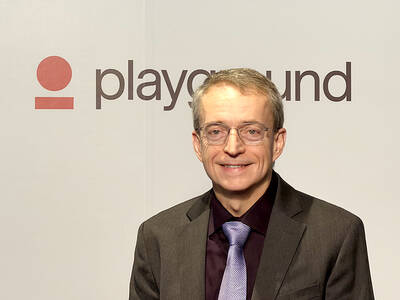Taiwan Beer (台啤) will be sold in China from May, media reported yesterday.
The Taiwan Tobacco and Liquor Corp (TTLC, 台酒公司) said China’s State Administration for Industry and Commerce had registered its Taiwan Beer trademark and announced it on its Web site, the Chinese-language Economic Daily News reported.
“Taiwan Beer will be allowed to go on sale in China from May 6,” the report said.
The beer is expected to generate between NT$2.6 billion and NT$3 billion (US$77 million to US$88.9 million) in revenue in China this year, equivalent to a 1 percent share of China’s beer market, TTLC chairman Duan Wei (韋伯韜) said.
Initially, the company planned to target only Fujian and Guangdong provinces as the customers there have similar tastes to the Taiwanese, he said.
Taiwan Beer is likely to sell at 6 yuan (US$0.88) to 10 yuan a bottle, compared with 5 yuan to 6 yuan for Chinese brands, he said.
The company has sought to register the 63-year-old Taiwan Beer trademark in China since 1999, but the process had been stalled amid tensions.
Separately, Kinmen Distillery plans to build a Chinese headquarters in Xiamen at a cost of US$18 million as part of efforts to tap into China’s wine market, the Economic Daily News reported.

JITTERS: Nexperia has a 20 percent market share for chips powering simpler features such as window controls, and changing supply chains could take years European carmakers are looking into ways to scratch components made with parts from China, spooked by deepening geopolitical spats playing out through chipmaker Nexperia BV and Beijing’s export controls on rare earths. To protect operations from trade ructions, several automakers are pushing major suppliers to find permanent alternatives to Chinese semiconductors, people familiar with the matter said. The industry is considering broader changes to its supply chain to adapt to shifting geopolitics, Europe’s main suppliers lobby CLEPA head Matthias Zink said. “We had some indications already — questions like: ‘How can you supply me without this dependency on China?’” Zink, who also

The number of Taiwanese working in the US rose to a record high of 137,000 last year, driven largely by Taiwan Semiconductor Manufacturing Co’s (TSMC, 台積電) rapid overseas expansion, according to government data released yesterday. A total of 666,000 Taiwanese nationals were employed abroad last year, an increase of 45,000 from 2023 and the highest level since the COVID-19 pandemic, data from the Directorate-General of Budget, Accounting and Statistics (DGBAS) showed. Overseas employment had steadily increased between 2009 and 2019, peaking at 739,000, before plunging to 319,000 in 2021 amid US-China trade tensions, global supply chain shifts, reshoring by Taiwanese companies and

Taiwan Semiconductor Manufacturing Co (TSMC, 台積電) received about NT$147 billion (US$4.71 billion) in subsidies from the US, Japanese, German and Chinese governments over the past two years for its global expansion. Financial data compiled by the world’s largest contract chipmaker showed the company secured NT$4.77 billion in subsidies from the governments in the third quarter, bringing the total for the first three quarters of the year to about NT$71.9 billion. Along with the NT$75.16 billion in financial aid TSMC received last year, the chipmaker obtained NT$147 billion in subsidies in almost two years, the data showed. The subsidies received by its subsidiaries —

OUTLOOK: Pat Gelsinger said he did not expect the heavy AI infrastructure investments by the major cloud service providers to cause an AI bubble to burst soon Building a resilient energy supply chain is crucial for Taiwan to develop artificial intelligence (AI) technology and grow its economy, former Intel Corp chief executive officer Pat Gelsinger said yesterday. Gelsinger, now a general partner at the US venture capital firm Playground Global LLC, was asked at a news conference in Taipei about his views on Taiwan’s hardware development and growing concern over an AI bubble. “Today, the greatest issue in Taiwan isn’t even in the software or in architecture. It is energy,” Gelsinger said. “You are not in the position to have a resilient energy supply chain, and that,